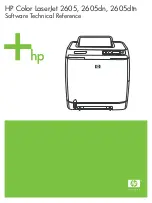
MPEG
101
Group of Pictures
The GOP (group of pictures) is a self-contained unit of MPEG frames, starting with an I-frame
and typically ending on a B-frame. Altering the GOP size determines how frequently I-frames
are added and is essentially the same as controlling the keyframe rate in a QuickTime movie.
The standard MPEG GOP is 15 frames for NTSC (12 frames for PAL) with a P-frame distance
of 3 and ending on a B-frame. This means a new I-frame is added every 1/2 second in 29.97 fps
material (NTSC) or almost every 1/2 second in 25 fps (PAL). Increasing the I-frame rate by
decreasing the size of the GOP has similar consequences to increasing the keyframe rate of a
QuickTime movie. Depending on the material, an extremely small or large GOP may cause
noticeable artifacting.
I-frames, or intraframes, take the most bytes to encode because they contain the entire frame,
and don’t contain differences as with P-frames and B-frames.
P-frames, or predictive frames, contain the changes between the current frame and the I-frame
or P-frame that precedes it. This is similar to difference frames in QuickTime. B-frames, or
bidirectional frames, can contain changes from the preceding/upcoming I-frames or P-frames.
B-frames compress more than P-frames, but they also take longer to encode.
The GOP can be either open or closed. An open GOP takes information from adjacent GOPs to
improve quality and is best for MPEG-1 streams, but makes random access harder. A closed
GOP only uses information from the frames within that GOP, which enables random access
throughout the stream and is required for encoding DVD-Video. Using closed GOPs may
produce lower-quality streams at the same bitrate, but the difference may not be discernible at
higher bitrates.
MPEG Licensing
Depending on your use of MPEG, there may be licensing fees due to the companies which
control the patents behind MPEG. For MPEG-2 use, the licensing agreement and fees are
usually handled by MPEG LA, a company that has secured the necessary rights from the
various MPEG-2 patent holders to license MPEG-2 to developers. For more information on
MPEG-2 licensing, visit MPEG LA site at
. The fact that you have
purchased a copy of Cleaner does not grant a license to use MPEG-2 in a manner inconsistent
with the MPEG LA Patent Portfolio License.
MPEG-1 licensing is not as well organized and defined as MPEG-2 licensing, and it is
somewhat unclear what your licensing responsibilities are when using it. You may find helpful
information at
or
. MPEG Audio Layer-3 (MP3)
audio also has licensing issues. See “MP3 Licensing” on page 97.
Содержание 64006-051108-9001 - Discreet Cleaner - Mac
Страница 1: ...from discreet November 2000 ...
Страница 8: ...Contents viii ...
Страница 16: ...Chapter 1 Introduction 8 ...
Страница 24: ...Chapter 2 Capture 16 ...
Страница 54: ...Chapter 4 Projects 46 ...
Страница 68: ...Chapter 5 Settings 60 ...
Страница 148: ...Chapter 7 Formats 140 ...
Страница 160: ...Chapter 8 Encoding 152 ...
Страница 220: ...Chapter 8 Encoding 212 ...
Страница 248: ...Chapter 11 Workflow 240 ...
Страница 254: ...Chapter 12 Troubleshooting 246 ...
Страница 284: ...Glossary 276 ...
















































